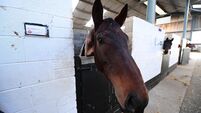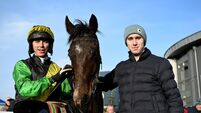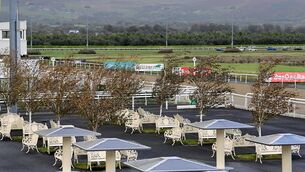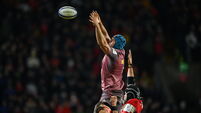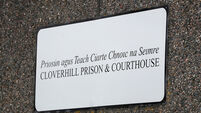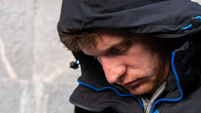The Daragh Ó Conchúir Interview: The winner’s enclosure
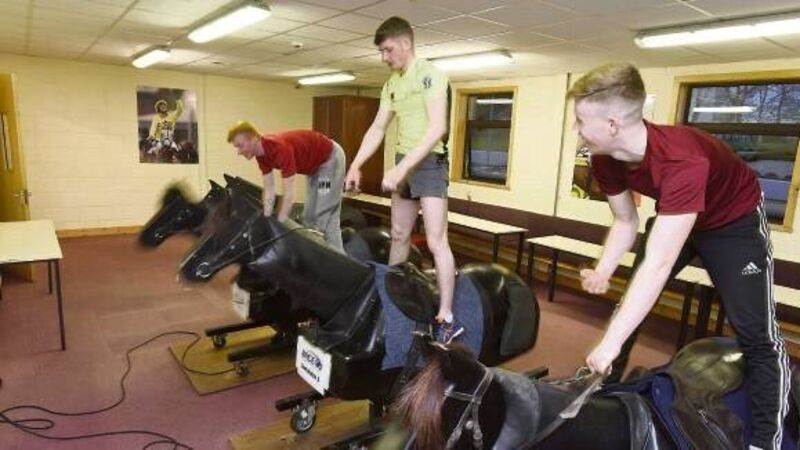
Horse Racing authorities have been working hard to provide support structures for established jockeys and set up a pathway for the next generation of young Irish talent.
goes behind the scenes of the Jockey Pathway Programme to discover the how the appliance of science is changing the sport.
You want to have done everything you can to be as good as you can be. You’re trying to rule out shortcomings. Where can you maximise on everything?
-
Barry Geraghty is one of the elder statesmen of the jump jockeys’ weigh room and among the most successful national hunt pilots racing has seen.
The Meath man, 39 in September, had won most of the sport’s major prizes when he stumbled upon strength and conditioning last year.
Geraghty was given a programme by renowned sports rehabilitation expert Enda King of the Sports Surgery Clinic in Santry, to aid the recovery of a broken left arm. Before long, he felt stronger all over.
He understood more about referred pain and the importance of strengthening other parts of the body before he could work on an area that actually needed rehabbing. He became educated.
Geraghty made his return 12 months ago to the day, in time for Galway. His first ride was a winner, he bagged the Galway Hurdle for the first time and finished the week as leading NH rider with four wins.
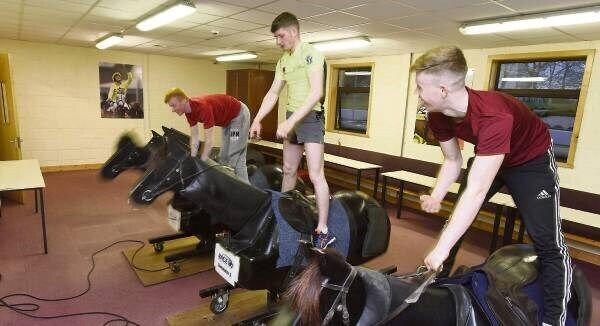
columnist Ruby Walsh is the same vintage and had a similar conversion a couple of years before Geraghty.
These are two of the best the sport has ever seen and if it’s good enough for them, it should be good enough for anybody.
Yet Walsh has expressed a caveat, maintaining that he would not have been receptive to such proactive pursuits in his twenties. He felt bulletproof then.
While the sense of indestructibility comes with youth, most elite sportspeople are products of long-term athlete development (LTAD) programmes, with key support structures in place to aid their pursuit of excellence.
Racing is very late to that particular party, as the Jockey Pathway Programme only began last September. This, remarkably, had a lot to do with resistance from the riders themselves but now that it is in place, the programme is building up a head of steam.
Flat jockeys generally need to be between 50-58kgs. Jump jockeys are around 60-65kgs. The traditional way to make weight was to curtail food and water intake.
If more pounds had to be shed they ran and drove to the track doing an impression of Fortycoats in a sweatsuit with the heating ramped up, sat in saunas or scalding baths. So-called piss pills accelerated urination.
Many resorted to flipping – making themselves vomit. They didn’t know that much of what they were doing was hindering high performance, not to mind damaging their health.
The Racing Academy and Centre of Education (RACE) in Kildare town has long been established as providing future jockeys with a foundation but the majority of education was provided by trainers and while it wasn’t a bad system, it was rarely holistic.
The appointment in 2008 of Adrian McGoldrick as senior medical officer of the Irish Turf Club — now the Irish Horseracing Regulatory Board (IHRB) — was a significant step in what has been a gradual progression.
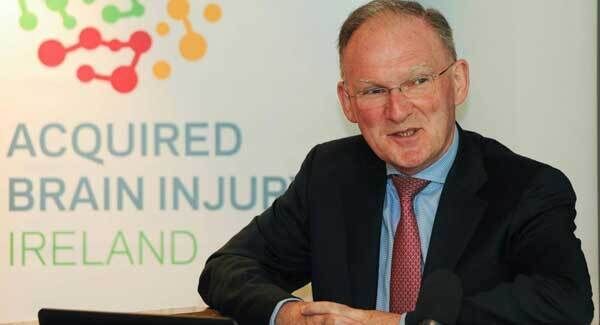
Standards of safety and healthcare have rocketed. McGoldrick earned jockeys’ trust.
Irish racing is now a recognised world leader when it comes to concussion testing and safety equipment but McGoldrick is never satisfied so he continues to lobby for pan-European and global buy-in to improve safety specifications for helmets and back protectors, and crucially, to secure an increase in minimum weights for jockeys.
He has produced many research papers himself but during his tenure, the Turf Club/IHRB medical department has engaged PHD students to carry out research into various issues affecting jockeys.
He established a good relationship with Giles Warrington, head of the PE and sports science department at University of Limerick, when Warrington was head of athlete services at the National Coaching and Training Centre and head physiologist and sports science advisor to the Olympic Council of Ireland.
They produced research on the consequences of jockeys making weight in 2004.
Warrington had moved onto Dublin City University by the time McGoldrick was appointed. Warrington provided a steady stream of students looking for interesting studies in their fields.
Eimear Dolan investigated the impact of making weight on bone health.
SarahJane Cullen completed her PhD by investigating the acute (how it impacted on performance) and chronic (health implications in retired jockeys) effects of making weight, as well as the physical demands of racing.
Gillian O’Loughlin completed her Masters focusing on jockeys’ dietary habits.
All these studies emphasised the negative effects of making weight and that jockeys needed support and education strategies to improve their health and performance, particularly in the areas of nutrition and exercise.
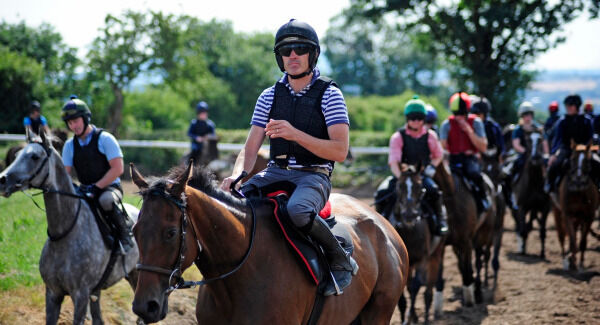
“We were coming in and giving exercise classes and doing bits on nutrition here and there but there was no structure,” recalls the now Dr Cullen, who lectures in exercise physiology at WIT and was exercise physiologist and assistant team manager at Team Ireland’s pre-Olympic base camps in 2012 and 2016.
She maintained her connection with racing as an exercise physiologist and researcher for the IHRB. Her involvement in the Jockey Pathway is a significant part of that.
“Sometimes we were doing stuff with the professional guys that they should have got when they were apprentices. So we decided there was a need for this Pathway.”
Warrington was overseeing LTAD rollout throughout the country and proposed it as the obvious method for providing education and professional support to jockeys.
It took some time to develop however. Warrington, O’Loughlin, Cullen, McGoldrick, Keith Rowe and Orlagh Rice from RACE and jockeys Johnny Murtagh, Barry Walsh and Kate O’Brien (also a sports science student doing work placement with Cullen) were all involved.
In 2015, Carol Nolan, the director of people and industry education, established the careers and racing education (CARE) department and Patrick Ryan took over the day-to-day running as industry and education training officer.
In June 2016, a document entitled Long Term Athlete Development for Professional Jockeys: A Framework for the Irish Horse Racing Industry was produced by Cullen and Rice.
An LTAD template, the document aimed at providing the right support at the right stage of a jockey’s development.
A comprehensive body of work, it encompassed technical, tactical, physical, mental, lifestyle, personal and general horsemanship support.
Riders would need to fulfil certain requirements before being allowed progress through five stages of jockey development, from pre-licence to professional.
It was also envisaged placing obligations on established pros to clock up a certain number of credits within an established timeframe in order to retain their licences.
Following a consultation process, it became clear that it was too ambitious for a start-up in the context of racing. The culture change would be too radical and jockeys would not support it.
Thus, rather than dooming a necessary development to failure, they had the smarts to pare it back to four key areas: strength and conditioning, nutrition, physiotherapy and sports psychology.
The Jockey Pathway was launched last September from a dedicated hub in RACE.
Four service providers — Wayne Middleton (S & C), Gillian O’Loughlin (nutrition), Therese Leahy (physio) and Ciara Losty (sports psychology) – are available to all jockeys, free of charge, with HRI covering the cost.
Strength and Conditioning
I had all those things in my head. You hear stories. Don’t lift weights, muscle is weight. It’s a load of shite. You’re not lifting huge weights. It’s lighter weights, higher repetition and understanding then how all the muscles in your body work, and why you get pains in different places is because you’re compensating, with one muscle doing a job another muscle should be doing. Instead of using your shoulder blades, you’re using the muscles below it. And all of a sudden you realise, if I stick at this, things might happen.
—
The main goals in the gym are to improve strength, range of motion (ROM) and fitness, both the aerobic and anaerobic varieties. This combination helps reduce the risk of injury.
Because of the physical nature of their work, jockeys are already very strong.
Wayne Middleton never fails to be impressed by a 65kg jockey deadlifting 150kg for three reps, or their ability to tot up significant totals of chin-ups. But that isn’t enough.
“Physically, horse riding is a mix of isometric leg strength, upper body pushing, and trunk strength,” says Middleton.
“The nature of their sitting position on the horse is showing us that jockeys have a lot of tightness in the hip area and limited movement in the upper thoracic areas.
"(So) we work hard on improving ROM in these areas as well as others… Having good flexibility and movement we believe will enhance their performance.”
Simulating riding action in the gym is difficult but not impossible. During a class I spy on, jockeys use bands tied to machines behind them, squat low, and imitate riding a finish.
The resistance of the bands is automatically working on the target areas.
“All athletes want to increase strength and decrease injury. We can’t stop them from falling but if they’re that bit more mobile and flexible, they can come back from injury quicker,” Middleton remarks.
So we had to convince jockeys that putting on strength didn’t mean putting on weight. But they will tell you themselves, they feel fresher and stronger. It’s about education. If you can move more efficiently, are stronger and freer, it has to make a difference.
Numbers are low on this night due to racing but it is interesting to note the different stages of physical development.
Jack Ruddy is an amateur jockey who stands at 6’2” but is lighter than Ben Love, a fellow amateur who is considerably shorter.
Conditional rider Ricky Doyle, who has enjoyed a decent start to the current season after coming off his best campaign since taking out a licence, boasts the type of barrel-chested physique that would never have been associated with jockeys in the past.
“You’d feel the benefits of it fairly quickly, just riding out,” says Ruddy. “You’re stronger and you’re fitter. You just feel better. My metabolism is good at the moment.
"Who knows what will happen in a few years but what I’m learning here with Wayne will help, along with the nutrition and physio especially.”
Middleton notes the competitiveness of the riders, how they want to get the better of one another in every routine but clap at the end, just as the loser congratulates the winner on the track.
Doyle is in beast mode, with Middleton smiling admiringly.
There is one tortuous routine where they do eight reps lifting 50kgs and then maintain 60kgs on the Wattbike for 20 seconds. Then it’s back to lifting 60kgs and so on, all the time, with increasingly jelly-turning legs.
“You probably don’t really know the full benefit of it ‘til you fall and you are going to fall,” Doyle relates. “There is no doubt it helps you stand up to that better.
"Also on the day you have two or three rides, maybe before, you’d start to feel tired for the third and be a bit weaker in a finish.
"But now, I’d notice that even if I was dehydrated, I can still be strong now for the third one.”
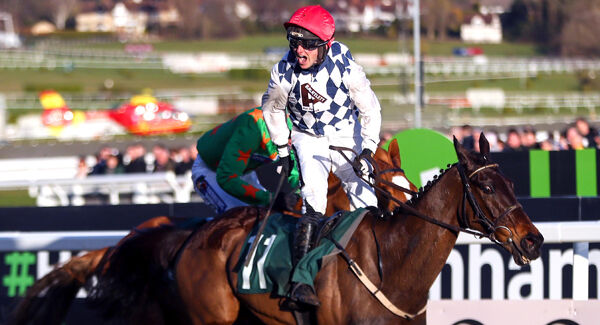
Check out the regulars. Patrick Mullins recently broke the record number of winners ridden by an amateur in Ireland and is the only amateur to ride in the four championship races at Cheltenham.
Rachael Blackmore built on being the first woman to be conditional champion in 2016 with a career-best tally of 34 winners last season.
A quarter way through the current campaign, she is already on 26, seven clear at the top of the professional jump jockeys’ table.
Shane Foley added to his Classic haul by claiming the 2000 Guineas on Romanised in May. Declan McDonogh is a former champion and multiple Group 1 victor who relied on riding regularly for fitness and conditioning.
Now, aged 38, he takes individual classes with Middleton, and is banging in the winners.
Another Classic winner, Chris Hayes had a lightning start to the season and is tracking McDonogh in fourth on the flat jockeys’ table. Billy Lee is hot on their heels.
A 32-year-old Group-1 winning pilot, Lee operates at the high end of this business for Willie McCreery, David Marnane and Fozzy Stack.
“I knew a few of the lads were going last year, the likes of Declan McDonogh and Shane Foley and they’d good things to say about it,” said Lee.
“They said they could feel the benefit of it. Declan McDonogh would be one of the strongest riders in the weigh room, if not the strongest, and he was saying it had improved his strength in the saddle. It’s different training.”
Katie O’Farrell is a conditional jockey who fractured her ankle in a schooling fall at Punchestown in April 2017.
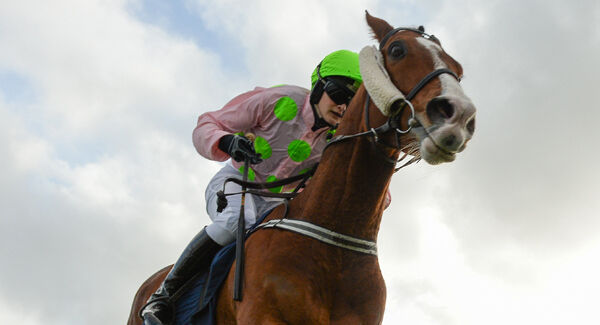
That sidelined her for six months and the launch of the Jockey Pathway could not have come at a better time.
She showed the benefits of the learnings when booting home a big-race double at Fairyhouse that included a €100,000 handicap hurdle win for Willie Mullins.
“The biggest plus of the whole thing is the fact that you’re conditioned to take falls,” O’Farrell reveals. “I can’t believe it.
"I’ve taken a few falls since I came back and I’ve literally bounced off the ground and no problem. I got brought down in Cork.
"The way I fell was very awkward, winded me and made me feel I was gonna be sore the next day but I was grand.
"It’s amazing and that’s all down to the fact that I’m consistently doing strength and conditioning to prevent injury.”
Nutrition
You can’t do one without the other. You have to eat well. If you don’t eat well the training gets harder and you have to do more. It affects your weight then so if you can have the two of them right, you’re fairly sorted.
—
The four services provided to jockeys through the Jockey Pathway are all interlinked but there is no way to separate S & C and nutrition.
Lee would have been considered very professional in the way in which he prepared.
He had sought nutritional advice already before tapping into the Pathway but if he needed to do lighter than normal, just did not eat.
He acknowledges the futility of this now. Eating and exercising rather than starving means he is at the same weight but is stronger and healthier.
“If you skip breakfast, by the time you’re racing, you’re nearly not eating 20 hours and that’s not good mentally for you,” explains Lee.
“And that’s what it is, it’s a mental thing. We can go a day without food no bother, but when you have to do it five days out of seven it makes it very draining. The way this has worked now has me definitely a lot better.”
“It just makes sense to learn what you can eat, and to be healthier and stronger,” says Ben Love.
If you’re flipping, you’re going to be weak and then you’re a danger to yourself and a danger to other jockeys.
Eating disorders, stomach and bone health issues are common among jockeys because of their dietary patterns.
And it is an obvious factor in explaining studies that place jockeys as showing significantly higher signs of mental health problems than any other sports people.
Gillian O’Loughlin deals individually with jockeys but has also hosted cooking demonstrations with RACE chef John Miller, teaching them how to prepare simple, nutritious meals as well as a number of healthy snacks at the start of a week.
“We had a good group of jockeys,” says O’Loughlin after one demo. “We did three cooked meals.
"We did a chicken curry, a salmon stir fry with cashew nut and then we did a spaghetti bolognese. And then we did a high protein smoothie and a muesli/granola yoghurt pot.
“I’ve been working with them 15 years now but it is slowly but surely sinking in. I’m seeing pony racers from the age of 10 so you’re getting in there and getting the right message across to them.
"Back in 2011, we looked at it and a lot of jockeys weren’t eating any fruit during a week. On average, it was one to three pieces maximum of fruit or veg per week. We’re trying to get people to eat seven pieces per day!
“I showed them an example of a jockey watching TV after dinner, sitting down with 10 digestive biscuits and mindlessly munching away.
"I said ‘You do realise that’s 750 calories you’ve just polished off?’
"So now what I do is I show them the 10 digestive biscuits, get them to guess how many calories that is and then I show them what they can eat instead — a full meal and a dessert for the same amount of calories.
"It’s trying to get the message across that it’s not necessary the quantity but the quality of food that they’re eating and to change behaviour.”
See www.workinracing.ie




